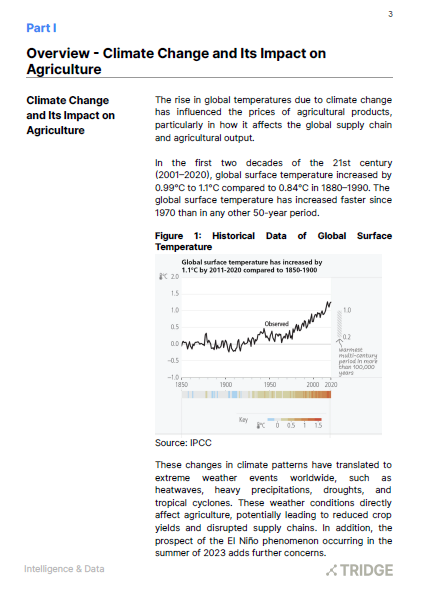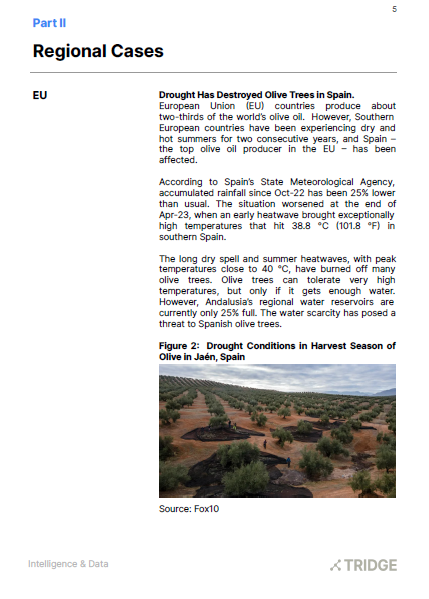Climate Change Mitigation Strategies in Agriculture
Putri Aisyah
Published Aug 29, 2023
PDF File Preview



The rise in global temperatures due to climate change has influenced the prices of agricultural products, particularly in how it affects the global supply chain and agricultural output.
In the first two decades of the 21st century (2001–2020), global surface temperature increased by 0.99°C to 1.1°C compared to 0.84°C in 1880–1990. The global surface temperature has increased faster since 1970 than in any other 50-year period.
These changes in climate patterns have translated to extreme weather events worldwide, such as heatwaves, heavy precipitations, droughts, and tropical cyclones. These weather conditions directly affect agriculture, potentially leading to reduced crop yields and disrupted supply chains. In addition, the prospect of the El Niño phenomenon occurring in the summer of 2023 adds further concerns.
Action to mitigate climate change in the agriculture industry is through the collaboration of stakeholders to produce climate-resilient crop varieties. In addition, the need to fund financial support is increasingly urgent for a more sustainable future.
In the first two decades of the 21st century (2001–2020), global surface temperature increased by 0.99°C to 1.1°C compared to 0.84°C in 1880–1990. The global surface temperature has increased faster since 1970 than in any other 50-year period.
These changes in climate patterns have translated to extreme weather events worldwide, such as heatwaves, heavy precipitations, droughts, and tropical cyclones. These weather conditions directly affect agriculture, potentially leading to reduced crop yields and disrupted supply chains. In addition, the prospect of the El Niño phenomenon occurring in the summer of 2023 adds further concerns.
Action to mitigate climate change in the agriculture industry is through the collaboration of stakeholders to produce climate-resilient crop varieties. In addition, the need to fund financial support is increasingly urgent for a more sustainable future.
Table of Content
Part I - Climate Change and Its Impact on Agriculture
Part II - Regional Cases
- EU
- Asia
- US
- LATAM
Part III - Global Action to Mitigate Climate Change
- Global Policies
- Collaboration on Climate-Resilient Crop Varieties
- Collaboration on Increasing Funds
Part IV - Key Take-away
Related market data
Read more relevant content
By clicking “Accept Cookies,” I agree to provide cookies for statistical and personalized preference purposes. To learn more about our cookies, please read our Privacy Policy.





